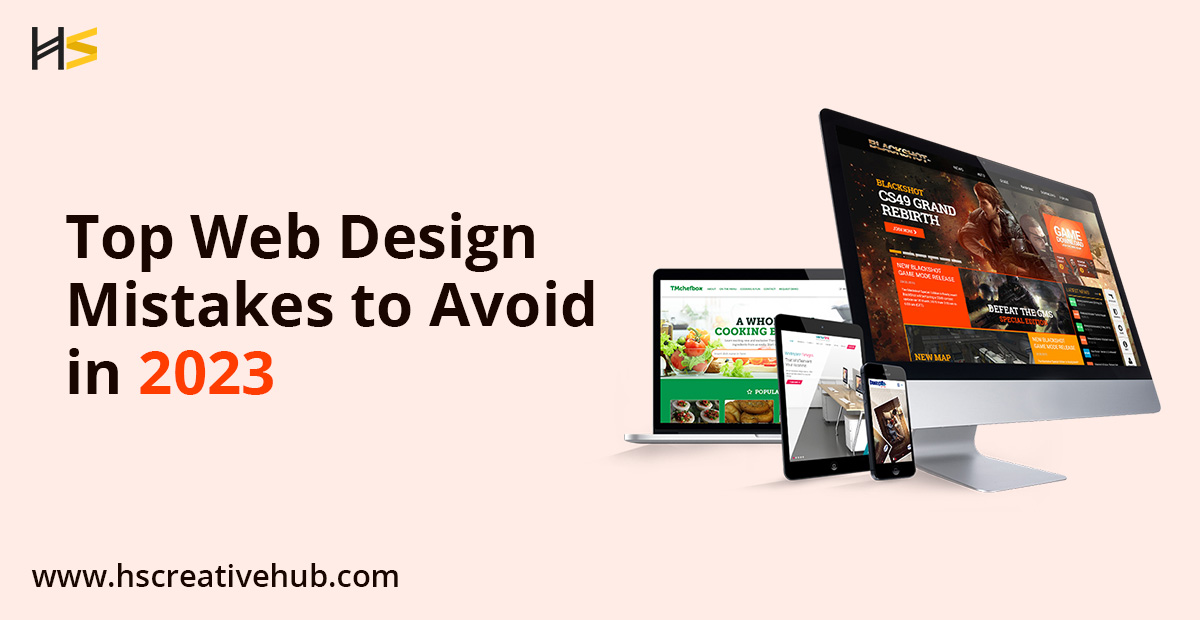In today’s digital age, a well-designed website is crucial for businesses and individuals alike. With new web design trends constantly emerging, it’s essential to stay up to date to provide users with an exceptional browsing experience. However, it’s equally important to be aware of common web design mistakes that can hinder user engagement and conversion rates. In this blog, we will explore the top web design mistakes to avoid in 2023 and provide insights on how to create a user-focused experience.
1) Neglecting Mobile Responsiveness
Mobile devices continue to dominate internet usage, and failing to optimize your website for mobile displays is a significant mistake. With a growing number of users accessing websites on their smartphones and tablets, responsive web design is a must. Ensure that your website is mobile-friendly, with a responsive layout, readable text, and well-optimized images. Implementing a mobile-first approach can help you cater to a wider audience and improve your search engine rankings.
2) Slow Page Load Times
In an era where users have limited attention spans, slow-loading websites are a major turn-off. Optimizing your website’s performance by minimizing file sizes, leveraging caching techniques, and utilizing content delivery networks (CDNs) can significantly improve page load times. Conduct regular performance audits and make necessary optimizations to ensure a seamless browsing experience for your visitors.
3) Cluttered and Complex Design
Simplicity is key when it comes to web design. Avoid cluttered layouts, excessive use of graphics, and overwhelming color schemes. Instead, strive for a clean and intuitive design that guides users effortlessly through your website. Use whitespace effectively to give your content room to breathe and create a visually appealing interface. Consistent and intuitive navigation will help users find what they’re looking for quickly and easily.
4) Inadequate Typography
Typography plays a crucial role in enhancing readability and conveying your brand’s personality. Using illegible fonts, improper line spacing, or poor contrast between the text and background can make your content difficult to read and drive visitors away. Choose fonts that are both aesthetically pleasing and easy to read across different devices. Ensure proper line heights and font sizes to improve the overall readability of your website.
5) Lack of Call-to-Action (CTA)
Every web page should have a clear call-to-action that directs users towards their next step. Whether it’s signing up for a newsletter, making a purchase, or contacting you for more information, a well-placed and visually prominent CTA button can significantly impact user engagement and conversion rates. Make your CTAs stand out with contrasting colors, compelling copy, and intuitive placement within the layout.
6) Poor Content Hierarchy
A well-structured content hierarchy helps users understand the importance and organization of your information. Failing to establish a clear content hierarchy can confuse visitors and make it difficult for them to find relevant information. Use headings, subheadings, bullet points, and visual cues to guide users through your content. Highlight key information and ensure that the most important elements are readily visible without overwhelming the page.

